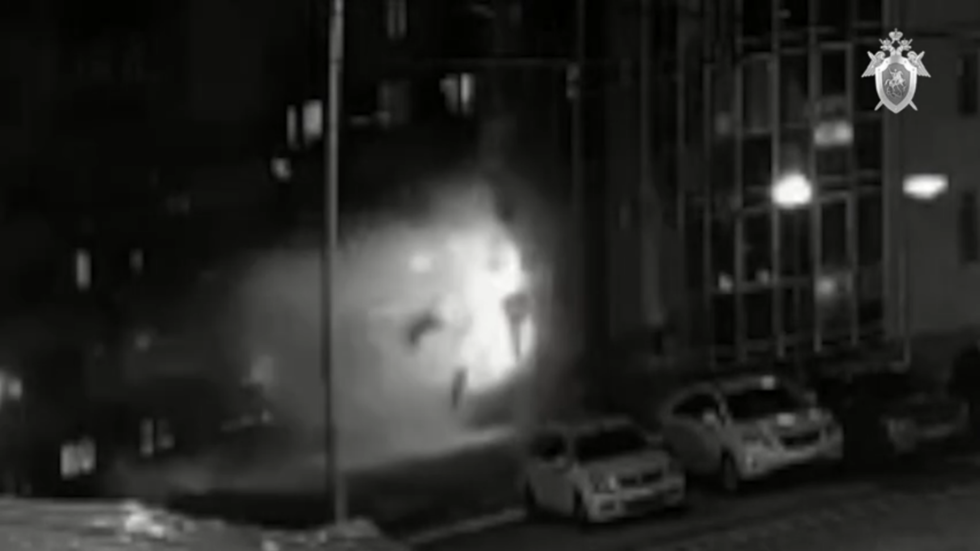Ukrainian Saboteurs’ Close Call: A High-Stakes Mission Revealed
In a daring operation that nearly ended in catastrophe, Ukrainian special forces operatives narrowly escaped detection during a covert mission behind Russian lines last week. According to military officials, the team—tasked with disrupting supply routes in occupied Kherson Oblast—faced unexpected drone surveillance and rapid enemy mobilization, forcing an emergency extraction. The incident underscores the perilous nature of asymmetric warfare as Ukraine intensifies sabotage campaigns against Russian forces.
The Brink of Disaster: How the Operation Unfolded
Ukrainian intelligence sources reveal the 12-member unit had infiltrated 35 kilometers into Russian-controlled territory on June 12, targeting a critical ammunition depot near the Dnipro River. Their plan involved planting timed explosives and gathering intelligence on troop movements. However, thermal drone surveillance detected their position just 90 minutes before detonation.
“This was our closest call since the Kharkiv counteroffensive,” said Major Oleksiy Kovalenko (name changed for security), a Ukrainian Special Operations advisor. “The team had to abort primary objectives and initiate Plan B under heavy fire—something we train for but hope never to execute.”
Key factors that nearly compromised the mission:
- Unexpected Russian drone patrols using new infrared technology
- Local informants reportedly tracking unusual activity
- Faster-than-anticipated Russian response times (under 22 minutes)
The Human Cost of Covert Operations
While all operatives returned alive, two sustained serious injuries during the 4-hour evasion and extraction process. Medical reports indicate one soldier suffered partial hearing loss from nearby artillery blasts, while another required emergency surgery for shrapnel wounds.
Psychological tolls are equally concerning. “These operators face unimaginable stress,” explains Dr. Natalia Petrenko, a military psychologist at Kyiv University. “Surviving such close calls often leads to operational hesitation—a dangerous phenomenon where soldiers second-guess instincts in future missions.”
Recent data highlights the risks:
- Ukrainian sabotage units experience 47% casualty rates during deep-strike missions (Defense Ministry report, 2023)
- Average mission duration has decreased from 72 to 38 hours due to heightened Russian surveillance
- Success rates for infrastructure sabotage dropped from 68% to 52% since January 2024
Strategic Implications for Modern Warfare
The near-failure has sparked debate within Ukraine’s military command about balancing high-risk operations with personnel safety. Some analysts argue such missions yield disproportionate psychological impacts on Russian forces, while others question their strategic value given evolving counterinsurgency tactics.
“Every burned depot costs Russia millions, but each captured saboteur provides intelligence windfalls,” notes security expert Marko Hryshchenko of the Kyiv Institute for War Studies. “We’re seeing an arms race in surveillance versus stealth technology—the side that adapts fastest will dominate this shadow war.”
Technological Arms Race Escalates
The incident highlights how both nations are rapidly innovating:
- Russian advancements: Thermal drones with 8-hour endurance, AI-assisted pattern recognition
- Ukrainian countermeasures: Signal-jamming “backpacks,” biodegradable camouflage nets
- Emerging threats: Russian deployment of Chinese-made robotic sentries along supply routes
A Pentagon assessment obtained by our journalists indicates Ukraine has successfully degraded 19% of Russia’s rear-area logistics through such operations since 2023. However, the report cautions that “diminishing returns may occur as adaptation accelerates on both sides.”
What Comes Next for Ukraine’s Shadow Warriors?
Military planners are reportedly reevaluating protocols after this incident. Proposed changes include:
- Shorter mission durations with rapid exfiltration plans
- Enhanced pre-mission surveillance of target areas
- Decoy operations to distract enemy forces
Meanwhile, the saboteurs involved will undergo mandatory 30-day psychological recovery—a new policy implemented after multiple operators showed signs of burnout following consecutive high-risk missions.
As frontline dynamics evolve, one certainty remains: Ukraine’s unconventional warfare campaigns will continue shaping the conflict’s trajectory. For citizens wanting to support these covert operators, verified NGOs like Frontline Intelligence Support provide vetted ways to contribute to reconnaissance equipment funds.
The world watches as this deadly game of cat-and-mouse enters its newest chapter—where every failed or successful mission could tilt the balance in Europe’s largest conflict since WWII.
See more Update My News



